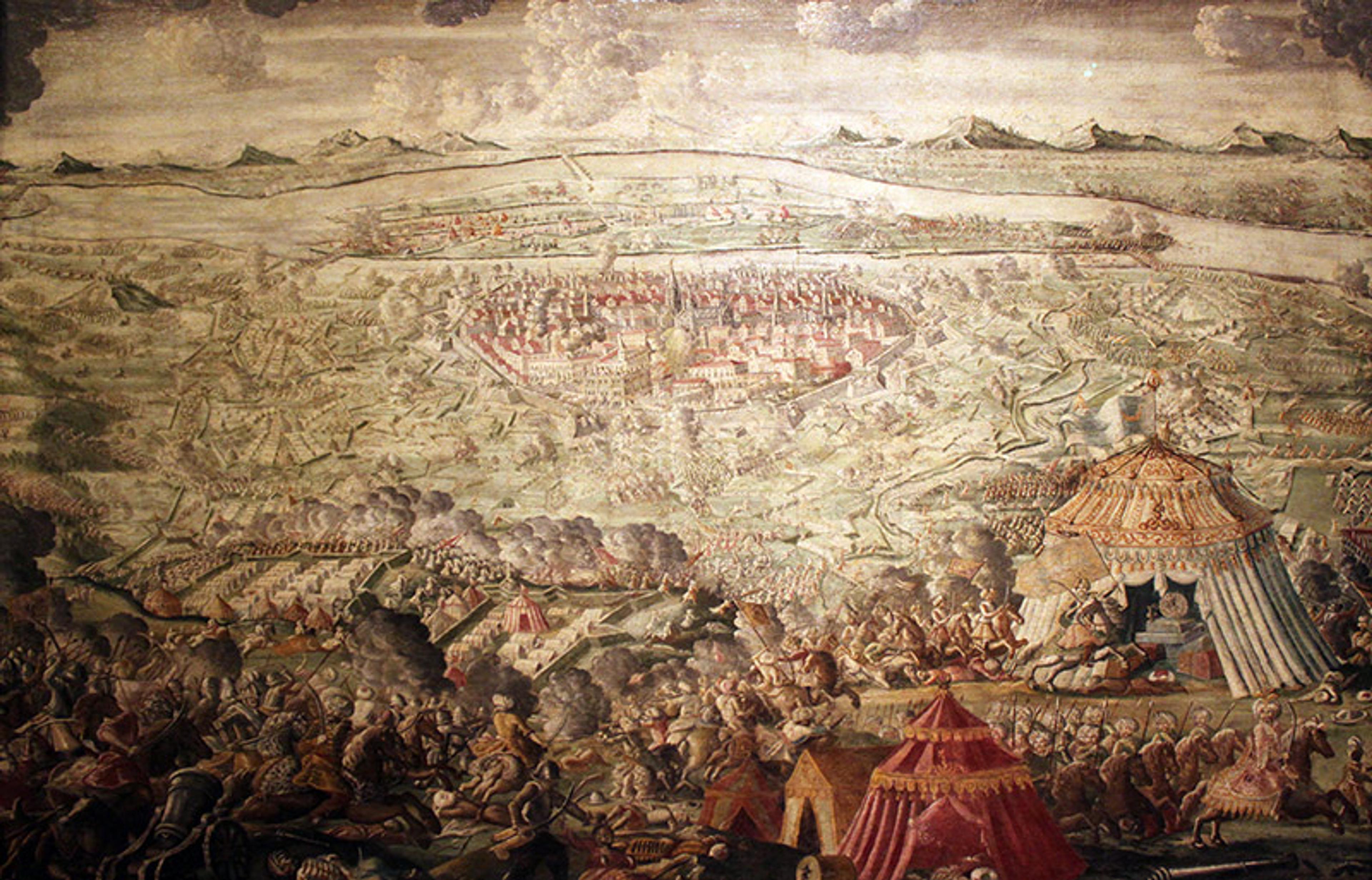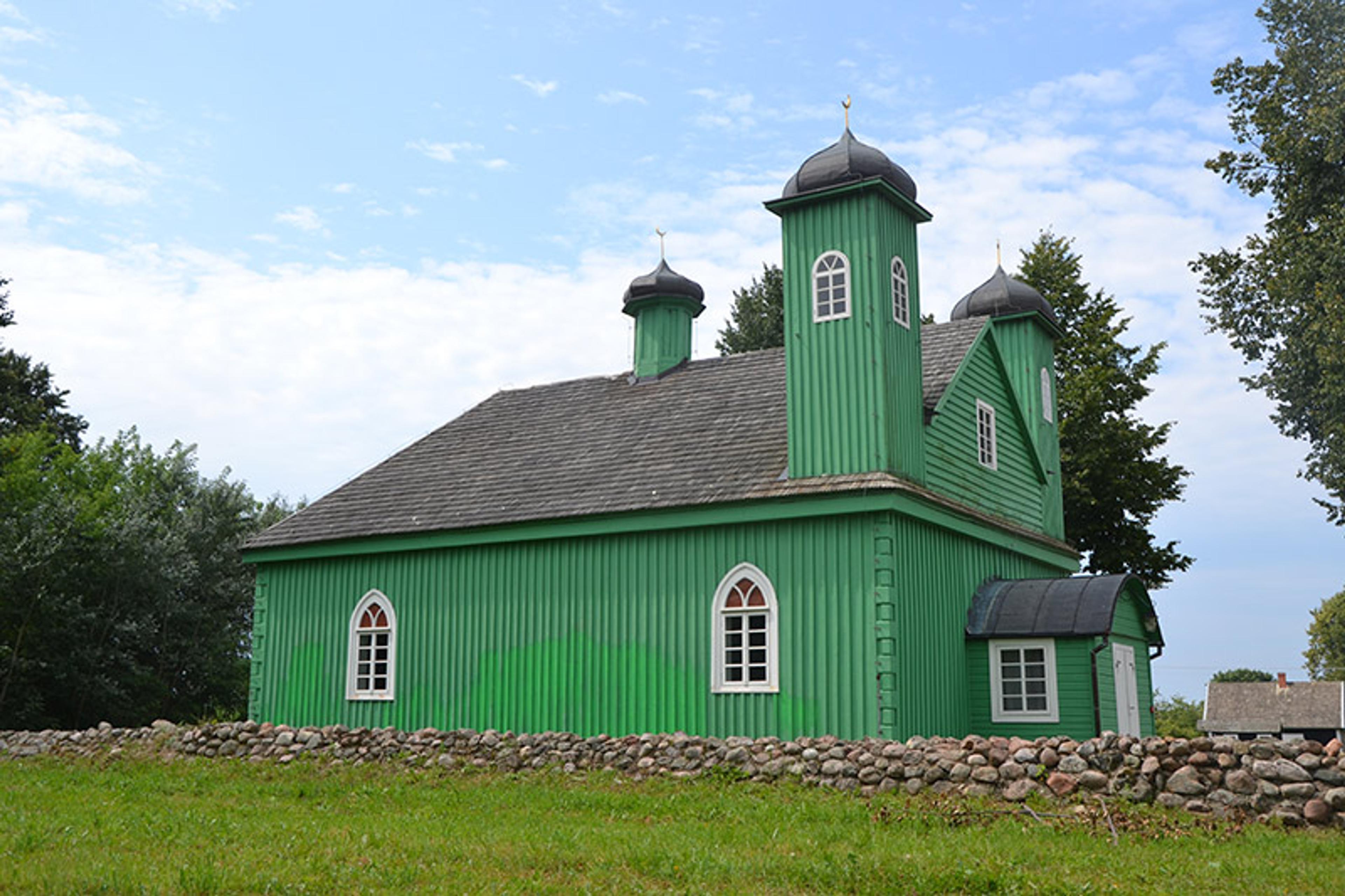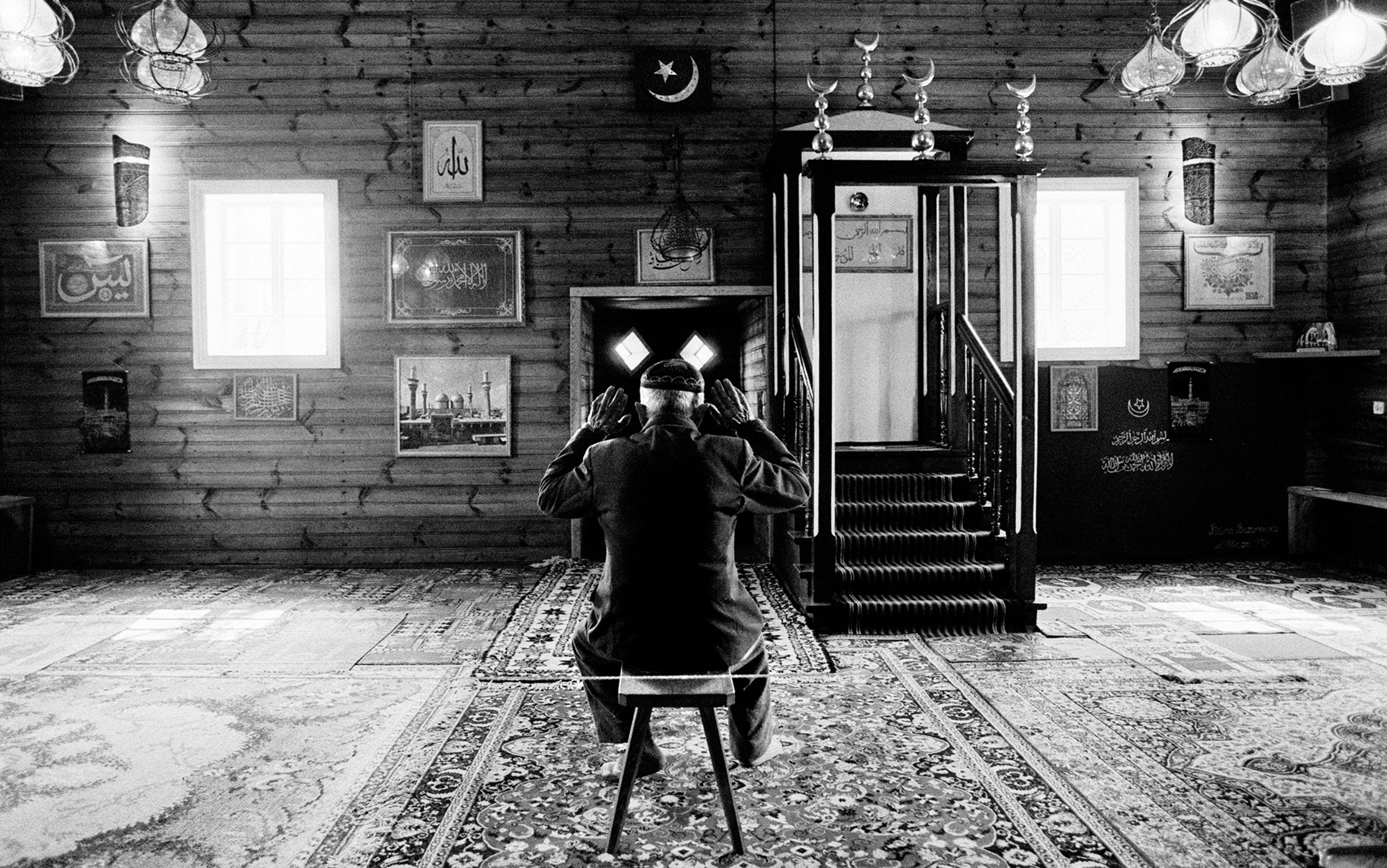When the bomb exploded, I was at a café outside Oslo reading on my phone. It was a gloomy Friday afternoon, 22 July 2011, 3:25pm. The news was filled with reports that Norway’s high-rise government quarter had suffered serious damage from a 900-kilo car bomb. Eight people were killed. On TV and online, pundits immediately began speculating that Al-Qaeda was responsible. In fact, the perpetrator was closer to home: a blond, 32-year-old Norwegian man from the capital’s affluent west end. The blue-eyed terrorist, Anders Behring Breivik, was one of us.
After the bomb went off, Breivik sat in his car and listened to the radio. When he learned that the explosion had not destroyed the office of the prime minister, he set off in my direction – passing just yards away from the café – dressed as a police officer. He headed to Utøya, the heart-shaped island where youth members of the Norwegian Labour Party were gathered for their annual summer camp. And there he embarked on an hour-long shooting spree, killing 69 people, 55 of them teenagers.
Breivik’s youngest victim was Sharidyn ‘Sissi’ Meegan Ngahiwi Svebakk-Bøhn, who turned 14 five days earlier. She had recently started her own blog, ‘Purple in Style’, named after her favourite colour, and planned to be an international fashion designer. On 22 July, Sharidyn woke up in a purple and blue tent she had put up herself. That afternoon, she met ‘the mother of the nation’, the former Norwegian prime minister Gro Harlem Brundtland. Starstruck and joyous, the 14-year-old called her mother, announcing that she now had a rival for her daughter’s greatest hero. At 5:29pm, Breivik put two bullets in Sharidyn’s back.
What killed Sharidyn? The bullets? They didn’t pull the trigger. The index finger? It didn’t trigger the terrorist’s mind. It was Breivik’s lethal ideas that ended the lives of 77 people. His ideology justified the execution of those he called ‘traitors’, ‘cultural Marxists’, and supporters of the ‘multiculturalist hegemony’ – exemplified, in his mind, by the peaceful kids on Utøya island, the future politicians of the Labour Party.
About the time Sharidyn met Brundland, Breivik was emailing his 1,500-page manifesto to more than 1,000 of his ideological acquaintances. The killings were a means of spreading awareness of his text. By committing one of the most heinous criminal acts ever carried out by a single man, he could achieve the global fame he sought for his ideas.
Breivik called his manifesto ‘2083 – A European Declaration of Independence’. He illustrated it with the red croix patée of the Knights Templar, a 12th-century Crusader order. But why such a distant year – why 2083?
The year 2083 will mark the 400th anniversary of the Battle of Vienna, fought on 12 September 1683. The Ottoman Empire, which then stretched from the shores of the Persian Gulf to modern-day Budapest and Morocco, had put Vienna under siege for two months. In response, the Polish-Lithuanian Commonwealth, then one of the continent’s great powers, the Holy Roman Empire, and the Habsburg Monarchy in Vienna joined forces (a first for these rivals) and drove the Ottomans back. Inspired by what he had been taught about this legendary battle, Breivik envisions a similar expulsion of Muslims: ‘By September 11th, 2083,’ he wrote in his manifesto, ‘the third wave of Jihad will have been repelled and the cultural Marxist/multiculturalist hegemony in Western Europe will be shattered and lying in ruin, exactly 400 years after we won the Battle of Vienna on September 11th, 1683. Europe will once again be governed by patriots.’
At the Battle of Vienna’s last centennial, in September 1983, Pope John Paul II arrived in the Austrian capital for a four-day visit. This tour was, according to The New York Times, ‘the high point of Austria’s celebration of the 300th anniversary of the lifting of the Turkish siege of Vienna by the united Christian armies of Europe under the command of King Jan III Sobieski of Poland’. On 12 September, the day of the battle, John Paul II met with praying Poles, fleeing their communist homeland, at Kahlenberg – the hill from which Sobieski began his attack against the Ottomans. An official plaque to the ‘Military Commando of Vienna, the tradition bearer’ was erected that day, which celebrates the ‘300-year anniversary of Vienna’s defence against the Turks’. Another nearby monument states that at this battle Poland’s king, Sobieski, came to ‘the rescue of Christianity’. The story of the Battle of Vienna is of a titanic clash of civilisations, of Christian victory and Muslim defeat. Such descriptions have helped shape the worldview of Breivik, Eurabia-conspiracists (who think Europe will be fully Islamised by the end of the century), and the European far-Right. The battle has become a central part of their ideology as a historical episode to emulate, since it appears to typify the ultimate ‘us versus them’ struggle. As the motto of the influential anti-Islamic blog Gates of Vienna declares: ‘At the siege of Vienna in 1683 Islam seemed poised to overrun Christian Europe. We are in a new phase of a very old war.’

Relief of Vienna in 1683. Anonymous artist c1700. Oil on canvas. Deutsches Historisches Museum, Berlin. Courtesy Wikimedia
If we examine the battle closely, we can understand it rather differently: as a battle based on inter-ethnic cooperation. After all, John III Sobieski (1629-96), the king of the multilingual and multi-religious Polish-Lithuanian Commonwealth, might not have won the battle were it not for the help of his country’s Sunni Muslim Tatars, known as the Lipka Tatars. ‘Tatar’ was the common name for Turkic-speaking, semi-nomadic people living on or around the immense steppes of the Eurasian continent. After the century-long ‘Pax Mongolica’ from the mid-13th century (also called the ‘Tatar Peace’) and the dissolution of the Mongol empire, a distinguished group of Muslim Tatars, fleeing the great Turko-Mongol ruler Tamerlane, asked the Christian grand duke of Lithuania (Lipka in their language) for asylum in 1397. Duke Vytautas, a national hero in Lithuanian history, welcomed them. He secured for them religious liberty and even exempted them from taxation. In return, the Lipka Tatars provided their new country, and later Poland, with military assistance, initially against Tamerlane.
The Lipka Tatars and their light cavalry became a vital factor in almost every battle in Polish-Lithuanian history: in September 1939, the 1st Tatar Squadron was among the last Polish army units to fight the invading infantry of Nazi Germany. As the Polish president Bronisław Komorowski declared in Gdańsk, in November 2010, upon the dedication of Poland’s first monument to the Tartars:
There was no enemy of Poland against whom they did not draw their weapons for the good of their motherland. They fought and forced out Russians, Swedes and even Turks despite their common religion – Islam. Without them the memorable victory in the Battle of Vienna would not have been possible and for this reason King John III Sobieski took them to his heart.
Sobieski had actually taken the Tatars to his heart some three decades earlier. In the 1650s, he was sent on a diplomatic mission to Constantinople, today’s Istanbul, where he learnt the Tatar language. When Sweden attacked the Polish capital in 1656, Sobieski was in charge of 2,000 men from the regiment of the Crimean Tatar cavalry, who defended the Poles. This battle was part of the ‘Swedish Deluge’, in which the Swedes destroyed more than 100 Polish cities and as many churches, described as the worst attack on Poland before the Second World War.
Lipka Tatars wore straw sprigs in their helmets to avoid being mistaken for Crimean Tatars on the other side
After Sobieski became king of the Commonwealth in 1674, he freed the Lipka Tatars from all taxation, raised their payments to match those of the Cossacks, and reinstated their former privileges (lost during the Counter-Reformation) including permission to rebuild their mosques. The Tatars also received Crown Estates land in Podlasia, in eastern Poland – as well as the districts of Brest, Kobryn and Grono in today’s Belarus – to ensure that they would continue to serve with distinction in the Polish-Lithuanian Commonwealth army.
Consequently, when Sobieski set off to lift Vienna’s siege in 1683 (now in command of the armies of the Holy Roman Empire and the Habsburgs), he brought with him the light cavalry of the Muslim Tatars, operating under the leadership of the Lipka Tatar lieutenant Samuel Murza Krzeczowski. During the battle, where they fought alongside Sobieski’s more famous Winged Hussars, the Lipka Tatars wore straw sprigs in their helmets to avoid being mistaken for Crimean Tatars, who were fighting for the Ottomans. The Lipka Tatars wreaked havoc by using their famous tactic of feigning retreat before turning to envelop the enemy. After the battle, Sobieski wrote to his wife Marysieńka from the camp by Szenauna: ‘Our Tatars are entertaining themselves with falcons they have brought with them; they are guarding the prisoners, and are proving to be loyal and trustworthy.’
That loyalty and trustworthiness was to be proven again three weeks later, when Sobieski and his troops were chasing the retreating Ottoman forces. They clashed at the Battle of Párkány, by the Danube River on 7 October 1683. At one point in the mayhem, Sobieski was cut off from his soldiers and in danger of being slain. He was saved by his lieutenant Krzeczowski, according to tradition, after which Sobieski promoted the Lipka Tatar Krzeczowski to colonel, and granted him an estate in Kruszyniany, in today’s eastern Poland. Sobieski later visited Krzeczowski and thanked him on his way back from a Sejm (parliament) assembly in Grodno. People in the town can still point out the old lime trees under which the two met and chatted.

Poland’s oldest mosque at Kruszyniany, on land given by King John III Sobieski in recognition of the Tatars’ military contribution. Reportedly, Sobieski stopped by and greeted the Tatars in the town in 1688.Courtesy Wikimedia
Not only did a Muslim soldier save the life of the ‘liberator of Europe’, but there is no ruler so revered among the Muslim Tatars as John III Sobieski. By his actions he ensured the later construction of several mosques in the region, still standing today. Sobieski is also the European king who can be credited with securing ‘the only example of a lasting Muslim community in a non-Islamic European country … A community that has throughout the ages enjoyed the same rights and privileges until today,’ as the historian Boguslaw R Zagórski has pointed out.
The other side of the Battle of Vienna was multi-religious as well. The Ottomans, led by the Sunni Muslim Sultan Mehmed IV (1642-93), were allied with the Roman Catholic Sun King of France, Louis XIV (1638-1715). The Ottomans and the French agreed to a formal alliance in the early 1530s, which remained unbroken until Napoleon briefly invaded Egypt a quarter of a millennium later. The Franco-Ottoman alliance is the longest-lasting peace agreement in the history of France.
Louis XIV was a Roman Catholic just like the rulers of the Habsburg Empire in Vienna. That did not, however, make them natural allies, for Louis XIV desired to be Europe’s most powerful Christian monarch. He used the Battle of Vienna to increase his standing. When the Ottomans closed in on Vienna, France bound up Habsburg forces by sending troops to their western front. No wonder the Sun King’s enemies nicknamed him ‘The Most Christian Turk’.
Already in 1679 Louis XIV had tried in vain to persuade the Ottomans to support the Magyar Rebellion against the Habsburg Empire in Vienna. The figure that triggered the revolt was the Lutheran Protestant and aristocrat Emeric Thököly (1657-1705). Opposing the Counter-Reformation suppression of Protestants by the Catholic Habsburgers, Thököly received support from the Sun King to start the war against Vienna in 1678, building on the Magyar Rebellion and the peasant kuruc uprisings of the early 1670s.
To further his cause, the Lutheran Thököly allied with the sultan Mehmed IV in Constantinople, and in November 1682 he was named the king of Upper Hungary (today, mostly Slovakia). This became a vassal state under the Ottomans – paying tribute to the sultan to receive the religious freedom for the Protestants that the Papal states would not grant. Thököly and his soldiers were at the Battle of Vienna fighting for the Ottomans alongside the other Ottoman-Christian vassal states, Wallachia and Moldova – both Eastern Orthodox monarchies in today’s Romania. Though Thököly and his Protestants were on the losing side, the sultan gave him the title of count and several estates in Galata, in today’s Turkey, where he settled with his wife.
The Protestant countries would have gladly seen the Holy Roman Empire fall to the Ottomans
Thököly was but one of several Christian leaders who sought support from the sultan in Constantinople. Another is the Cossack Petro Doroshenko (1627-98), who led the Cossack Hetmanate, a state in central Ukraine, and fought the Polish in the 1660s with the help of Crimean Tatars. In March 1669, the Cossack Council of Kursun approved Doroshenko’s proposal to make an alliance with the Ottomans in order to stand up to Polish and Russian incursions.
In western Europe, new Protestant states, formed after the Reformation of the early 16th century, often had high hopes for help from the Ottoman Muslims against the Pope and the Catholic powers of Spain and Vienna. Take the Netherlands’ William I of Orange (1533-84), the ‘Father of the Fatherland’, who in 1566 sent an envoy to Sultan Suleiman the Magnificent requesting aid in his struggle against the Spanish suppression of Protestant subjects. And in 1574, Sultan Murad III (1546-95) sent a letter to the Protestants of the Netherlands and Spain declaring that Lutherans and Calvinists had more in common with Sunni Islam than Catholicism: ‘As you, for your part, do not worship idols, you have banished the idols and portraits and “bells” from churches, and declared your faith by stating that God Almighty is one and Holy Jesus is His Prophet…’
Such a historical background can explain why the Polish king John III Sobieski and his Muslim Tatars were the only ones to come to the rescue of the Habsburgs in Vienna. The Protestant countries would have gladly seen the Holy Roman Empire fall to the Ottomans. They had fought the Habsburgs and the Pope, and for the most part been allied with the Ottoman forces, during the 30 Years’ War (1618-48) – the bloodiest of the so-called ‘Christian civil wars’ after the Reformation.
So the Battle of Vienna wasn’t a war between the cross and the crescent. It was not a clash of civilisations, a mighty Christian victory over Islam. Rather, Sunni Muslim Tatars were vital in helping the Catholic Polish king on the one side – just as Lutheran Hungarians were allied with the Sunni Muslim Sultan on the other. The year 1683, in the end, was just another year of battles over power and influence between the great states of Europe. Loyalties crossed all borders of faith and ethnicity. Sobieski and his allies never ‘saved Europe’, nor Christianity, despite the claims of plaques, textbooks, and encyclopaedias. Rather, the ruler of the Polish-Lithuanian Commonwealth was Europe’s foremost saviour of Muslim life and culture in northern Europe. The Battle of Vienna was a multicultural drama; an example of the complex and paradoxical twists of European history. There never has been such a thing as ‘the united Christian armies of Europe’.
Nor did the Battle of Vienna matter as much in European history as some would like to believe. After 1683, the Ottomans ruled the Balkans for two more centuries; the majority of Greeks, Bulgarians, Romanians, Serbs and Croats stayed as Christian as ever, and are today more Christian than the Austrians. As for the Sunni Muslim Ottomans, their primary enemy from the 16th to the 18th century was no European state, but the neighbouring Safavid empire of Persia and its new Twelver school of Shia Islam.
The misuse of history by Breivik and his ilk is based on hatred, not logic or argument or reason. We must ask ourselves where this hatred comes from. After all, much of the 2083 manifesto is based on Wikipedia articles and what the terrorist was taught about European history. And the ideas Breivik wrote about are now far more widespread in Europe than they were seven years ago. In such a world, we might also reflect upon the poem ‘On Violence’ by the German author Bertolt Brecht, written after the upheavals of 1933:
The headlong stream is termed violent
But the river bed hemming it in is
Termed violent by no one.
Most of the time, ideas are wonderful. They are why we are all here. But some of the time, our ideas turn lethal. They are why Sharidyn is not among us anymore.






